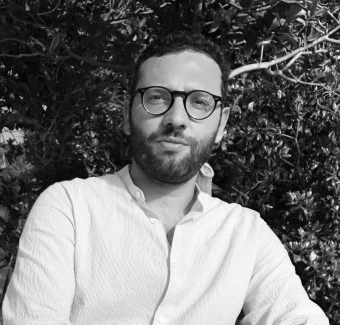Davide Spagnoletto
FALL-WINTER 2023-24

Davide Spagnoletto is a PhD candidate in Historical-artistic Studies at Università Roma Tre. His doctoral research is dedicated to Jewish artists in Italy from emancipation to the birth of the state of Israel and investigates the art practices of some figures who were active between 1848 and 1948, with a focus on sculpture. The intention is to consolidate critical positions that do not align with particular Jewish characteristics in their works and to analyze the response of these personalities to social and political changes. The study is based on the analysis of works and documents from public and private archives.
Davide received a degree in architecture from La Sapienza University in Rome and continued his studies at the School of Specialization in Historical-Artistic Heritage at the University of Macerata with a thesis on the collection of Toti Scialoja and Gabriella Drudi, which reconstructs their relationships with several Italian and American artists. He collaborated with the Jewish Museum of Rome where he co-curated ‘Roma 1948. Italian Art towards Israel‘ (April-October 2023) stemming from his research on an exhibition for the State of Israel that took place in Rome in 1948.
The exhibition features previously unpublished works from the Tel Aviv Museum of Art (including Carla Accardi, Afro Basaldella, Corrado Cagli, Carlo Levi, Giuseppe Capogrossi and Renato Guttuso).
His recent publications cover the relationship between sculpture and architecture in the entrance to the Vatican Museums created in 1932 (Bollettino dei Monumenti Musei e Gallerie Pontificie, 2022), as well as the correspondence between Corrado Cagli and Amelia Della Pergola and Anna Laetitia Pecci Blunt (Edifir, 2022).
As a fellow at CIMA, Davide intends to analyze the path undertaken by some Italian Jewish artists who chose exile in America after the promulgation of racial laws. The aim is to investigate how Corrado Cagli and Dario Viterbo’s exclusion from public life and departure from their homeland affected their work by bringing in new iconographic elements. The study aims to show how Jewish identity reappears in opposition to exclusion from the context of belonging. Each of them found themselves negotiating a new role within society by testing different strategies to create new relationships with other Italians and Jewish exiles.
